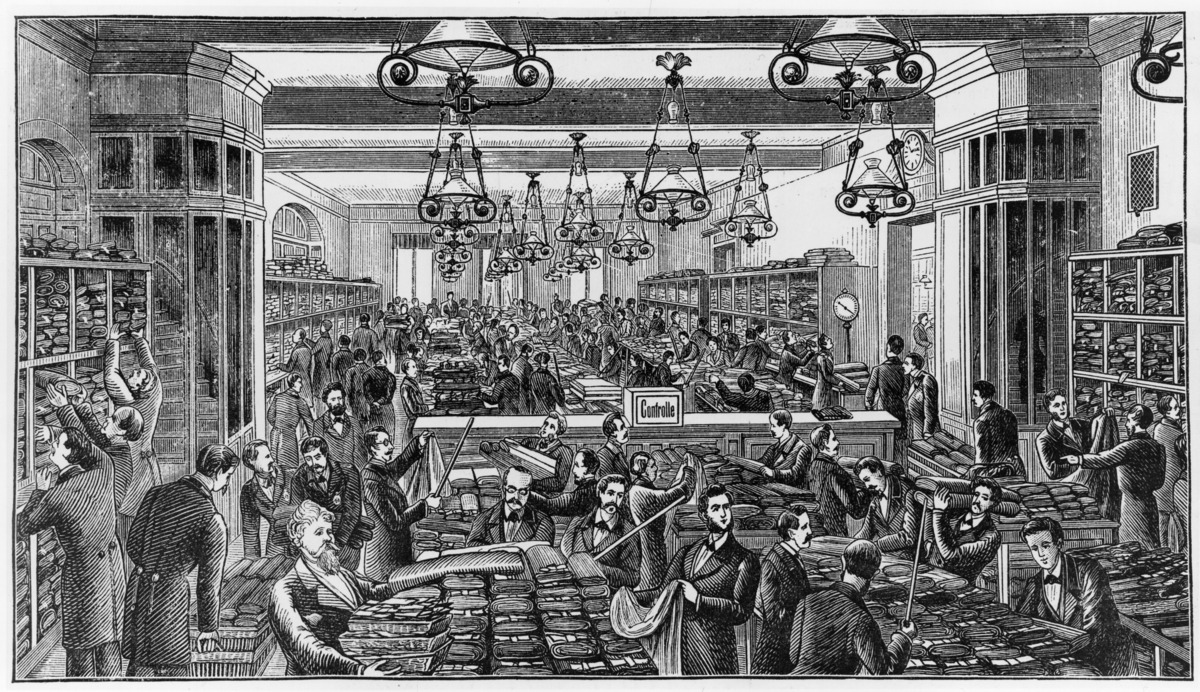Abstract
Processes and patterns of production and consumption were changing
rapidly in the Bismarckian era. However, as this and the following image
suggest, trade and commerce remained highly gendered enterprises. The
Rudolph Hertzog store at Breite Straße 12–15, Berlin, was founded in
1839. It developed into the best-known Berlin source for furniture,
carpets, fashion goods, and fabric. Hertzog was one of the first
businesses to offer fixed prices and print advertising, as well as an
annual catalogue (“Agenda”) that ran to 200 pages. The first image in
this slide show, an 1882 woodcut, shows the sales floor for fashion and
silken wares (Verkaufsräume für Mode- und
Seidenwaren) on the store’s ground floor: a few male salespersons
can be seen among their female customers. The second image shows the
operation room for export trades
(Effektuierungssaal für
Exportgeschäfte): no women can be seen among the staff here.

